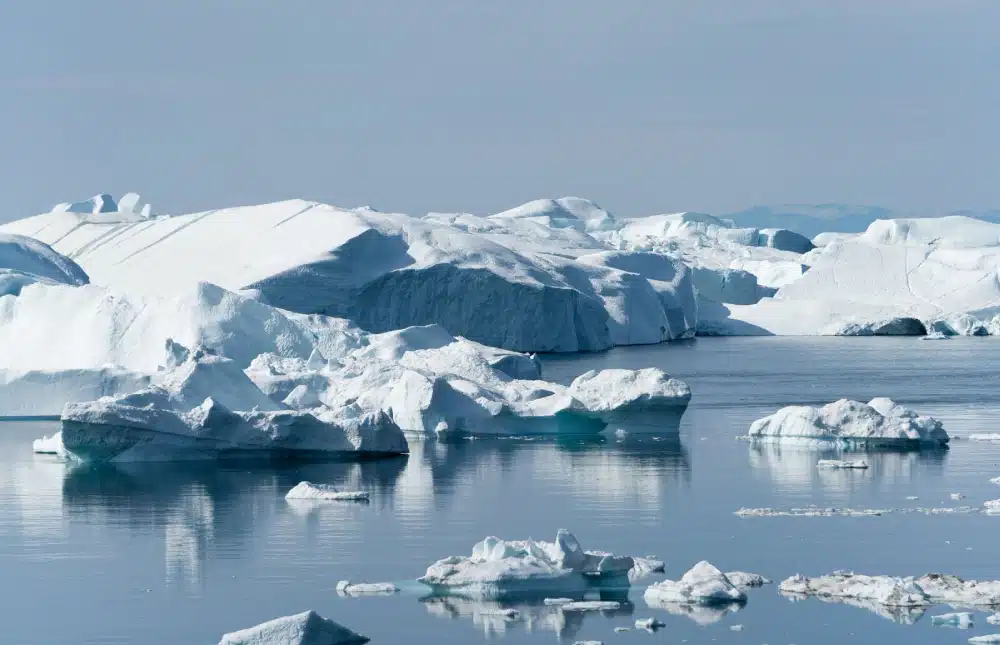Fjords, glaciers and icebergs
On the west coast of Greenland, some 250 kilometres north of the Arctic Circle, lies Ilulissat. In the heart of Disko Bay, this small coastal town guards the entrance to Isfjord, a majestic inlet along which glides the ice of Sermeq Kujalleq, one of the world’s most active glaciers.
Ilulissat, the pearl of Disko Bay
You can only reach this destination by sea or air. Ilulissat is one of Greenland’s great treasures, bringing a dash of vibrant colour to Disko Bay. As you approach, a striking contrast emerges between the stark white of the mountains and myriad colourful dwellings. The colours of these red, black, blue, green and yellow houses originally helped to identify their occupants’ professions from afar.
Fascinating and frozen in its winter coat, Ilulissat takes on a special atmosphere in summer when, under the midnight sun, life goes on well into the evening, including family outings, football matches and fishermen going about their business in the harbour. Fishing and hunting continue to punctuate local people’s daily life. This 5,000-strong community is deeply rooted in Inuit tradition.
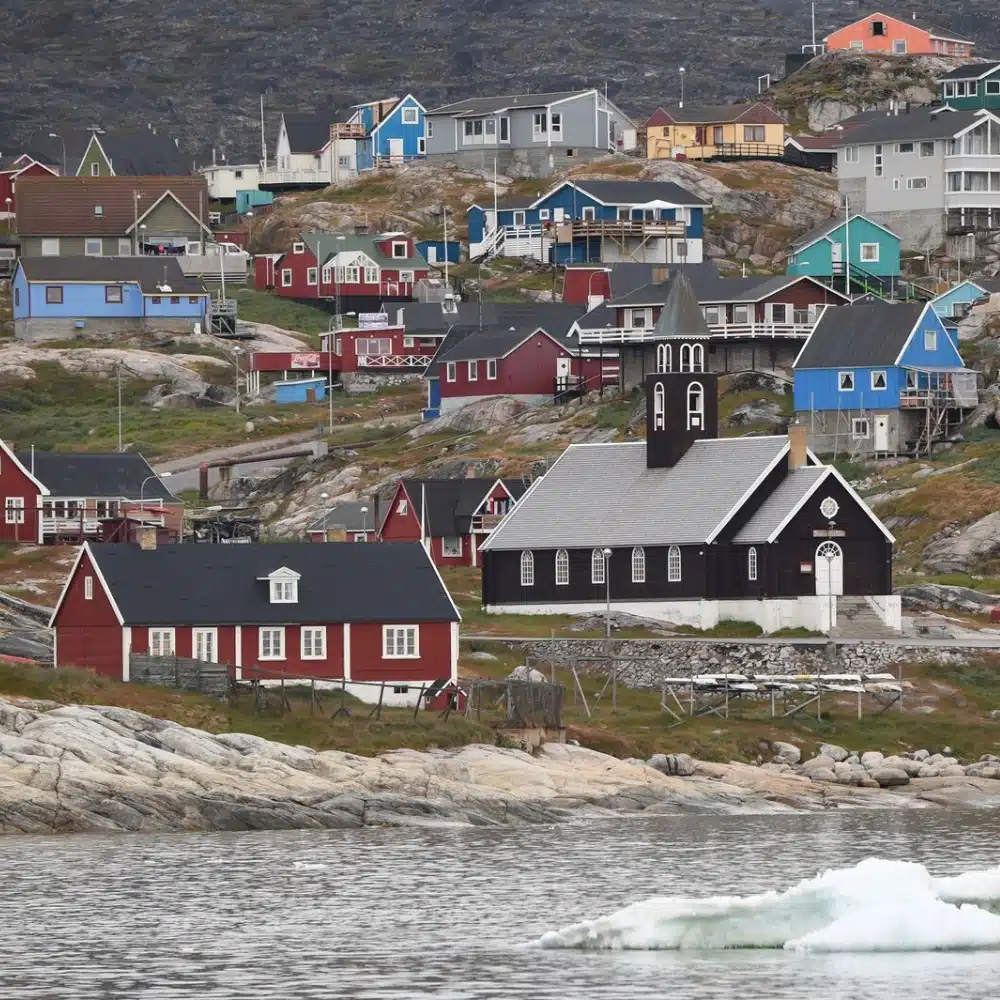
Ilulissat, home of Knud Rasmussen
Ilulissat was still called Jakobshavn when Knud Rasmussen was born in 1879. This Danish explorer and anthropologist was the “father of Eskimology”. Along with Peter Freuchen, he founded the Thule trading post in Uummannaq, near Cape York, a region steeped in history and the land of the great explorers Robert Peary, Paul-Émile Victor and Jean Malaurie. It was from here that Rasmussen organised his famous “Thule Expeditions”. The fifth would take him to Alaska for the first time, which he reached via the Northwest Passage by dog sled. In Ilulissat, his childhood home became the Ilulissat Cultural History Museum.
In ancient footsteps
The Sermermiut valley, whose literal translation is “those who live near the glacier”, is a sacred place. It was here that, for over 4,000 years, various Inuit peoples laid the foundations of their culture in the region. There are remains of the Saqqaq, Dorset and Thule cultures, some dating back to 1400 BC. When a Danish expedition landed here for the first time in 1727, 250 people still lived in the village. The modern town of Ilulissat was not built until 1741. It was built by Danish missionaries who named it Jakobshavn, after the founder Jacob Severin.
From the summit of Sermermiut, in Nakkaavik, you can enjoy a panorama of incredible beauty. Vast expanses are carpeted with arctic plants and ringed by mountains.
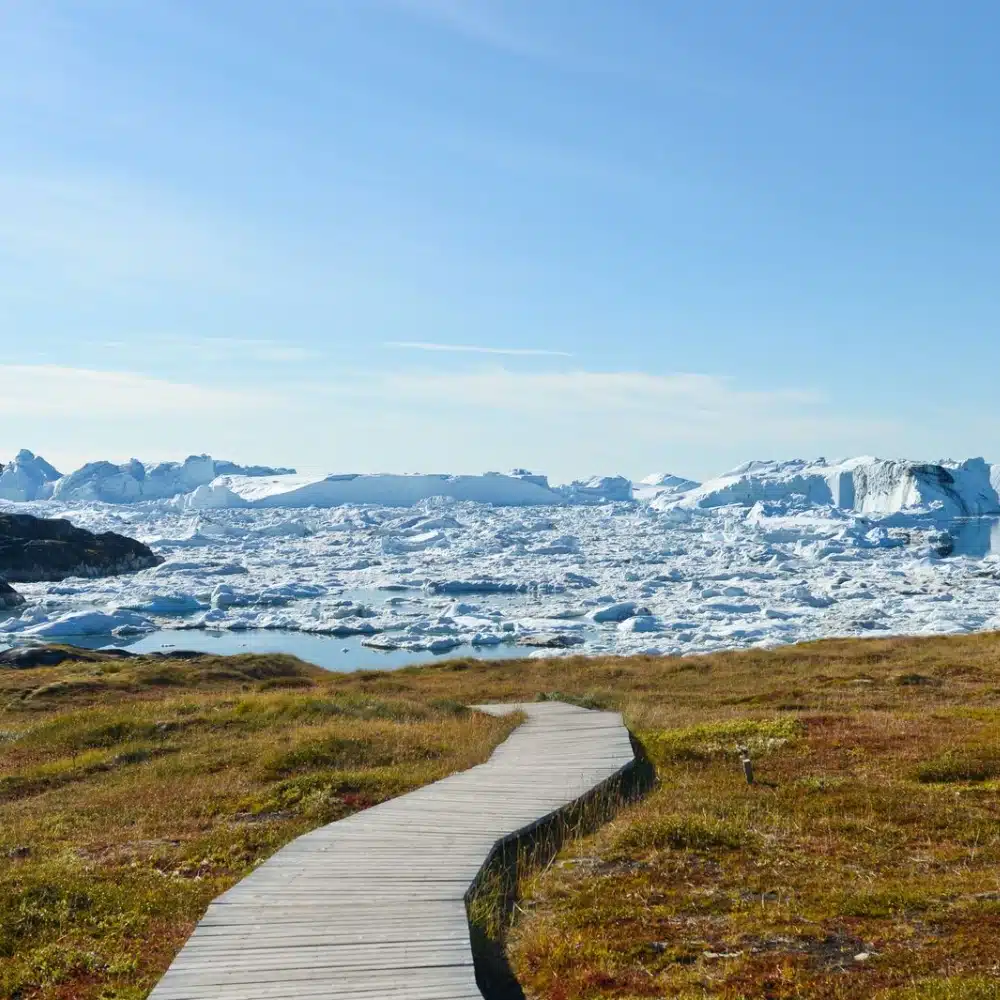
Ilulissat, gateway to the Isfjord
Ilulissat means “glacier” in Greenlandic, and it’s not hard to see why. The port lies at the entrance to the Isfjord, the mouth of the immense Sermeq Kujalleq glacier. Listed as a UNESCO World Heritage Site, this vast frozen fjord is 3 to 6 kilometres wide and 60 kilometres long, and pours out 20 billion tonnes of icebergs every year.
In the ice of the Isfjord
Isfjord, the icy fjord of Ilulissat, will undoubtedly be your favourite spot for observing the icy landscapes that surround you. In this wide inlet, every day, ice giants up to 100 metres high drift by in their hundreds on polar waters. This absolutely enchanting Arctic spectacle is often accompanied by dancing seabirds enjoying the fjord’s fish-filled waters.
Sermeq Kujalleq, Greenland’s immense icy tongue
You may already have seen the Jakobshavn Isbræ or Sermeq Kujalleq from Sermermiut. This is one of the few glaciers capable of dragging ice from the ice sheet to the sea, and one of the most active in the world.

It’s the biggest ice-emitting glacier in Greenland! It alone drains 7% of Greenland’s ice. It’s phenomenal! It is quite simply the largest supplier of icebergs in the northern hemisphere!
Jean Krug, glaciologist and PONANT naturalist guide
Hike along the Isfjord on signposted footpaths accessible to all – one of which will take you to the Isfjordscentret which, in addition to offering areas for research and training, hosts exhibitions and even has a cinema! Or take an unforgettable trip out to sea and get up close and personal with the icebergs, sometimes sparkling in the sunshine, sometimes revealing their beautiful shades of blue when the sky gets cloudier.
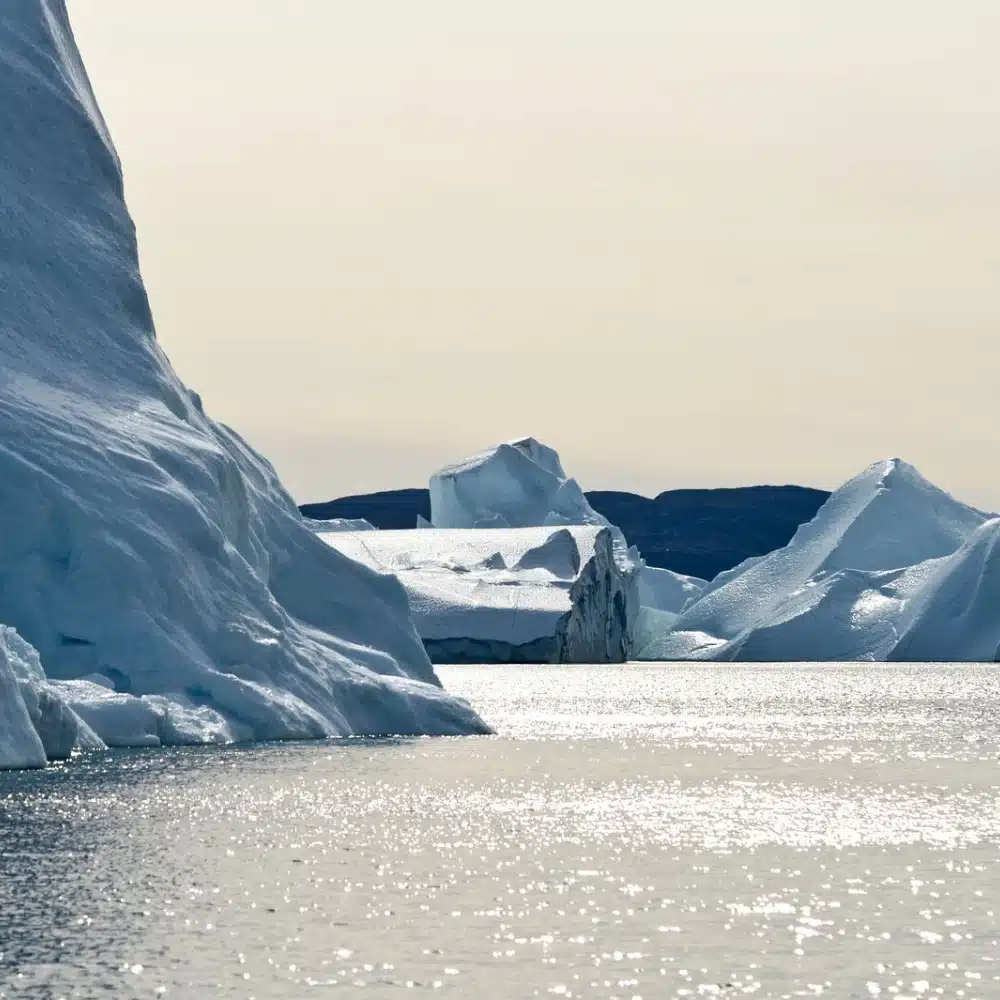
Disko Bay: nature at its purest
Disko Bay stretches out for over 400 km at the mouth of Isfjord, at the Baffin Sea shore, and is one of the most beautiful bays in Greenland. It is also a favourite passageway for bowhead whales and fin whales, as well as, more rarely, beluga whales and narwhals. No fewer than nine glaciers (including the Sermeq Kujalleq) pour their colossal masses of ice into the area. The scenery is breathtaking as razor-sharp lines of light reflect off drifting icebergs’ high walls.

As the ice breaks and rearranges itself in the heart of the Isfjord, some of its imposing mountains eventually break free and float away into the waters of Disko Bay where they can be admired in all their immensity. It’s superb!
Jean Krug, glaciologist and PONANT naturalist guide
They are heading south and towards the Canadian coast. What about you? Why not round off your stay in Ilulissat and Disko Bay with a trip to Disko Island or Qeqertarsuaq, which means “big island” in the local language. Its small eponymous village will be your gateway to another, equally beautiful natural world.
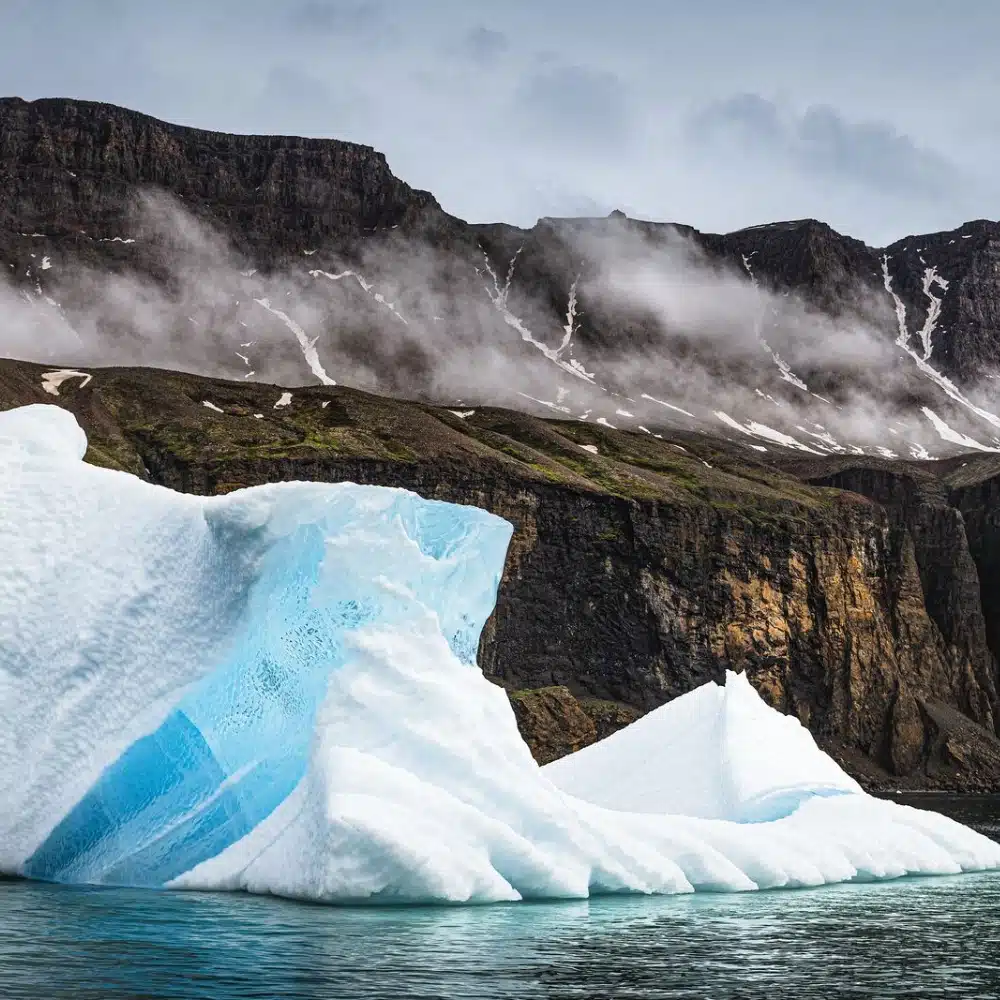
Photos credits: ©PONANT/Marvin Kuhr/Julien Fabro ; ©Studio PONANT/Nathalie Michel/Servane Roy-Berton/Julie Lacombe.
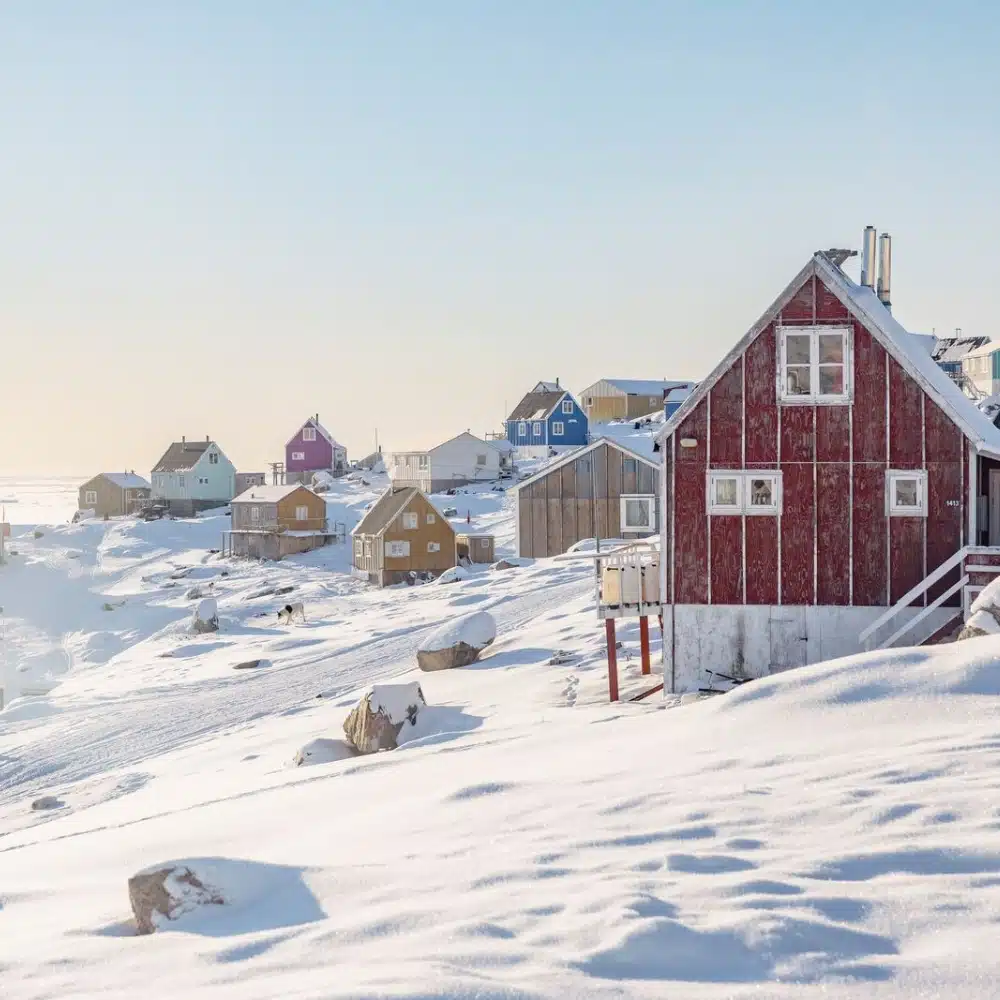
Head for the Far North
Embark on a Greenland cruise with PONANT.

